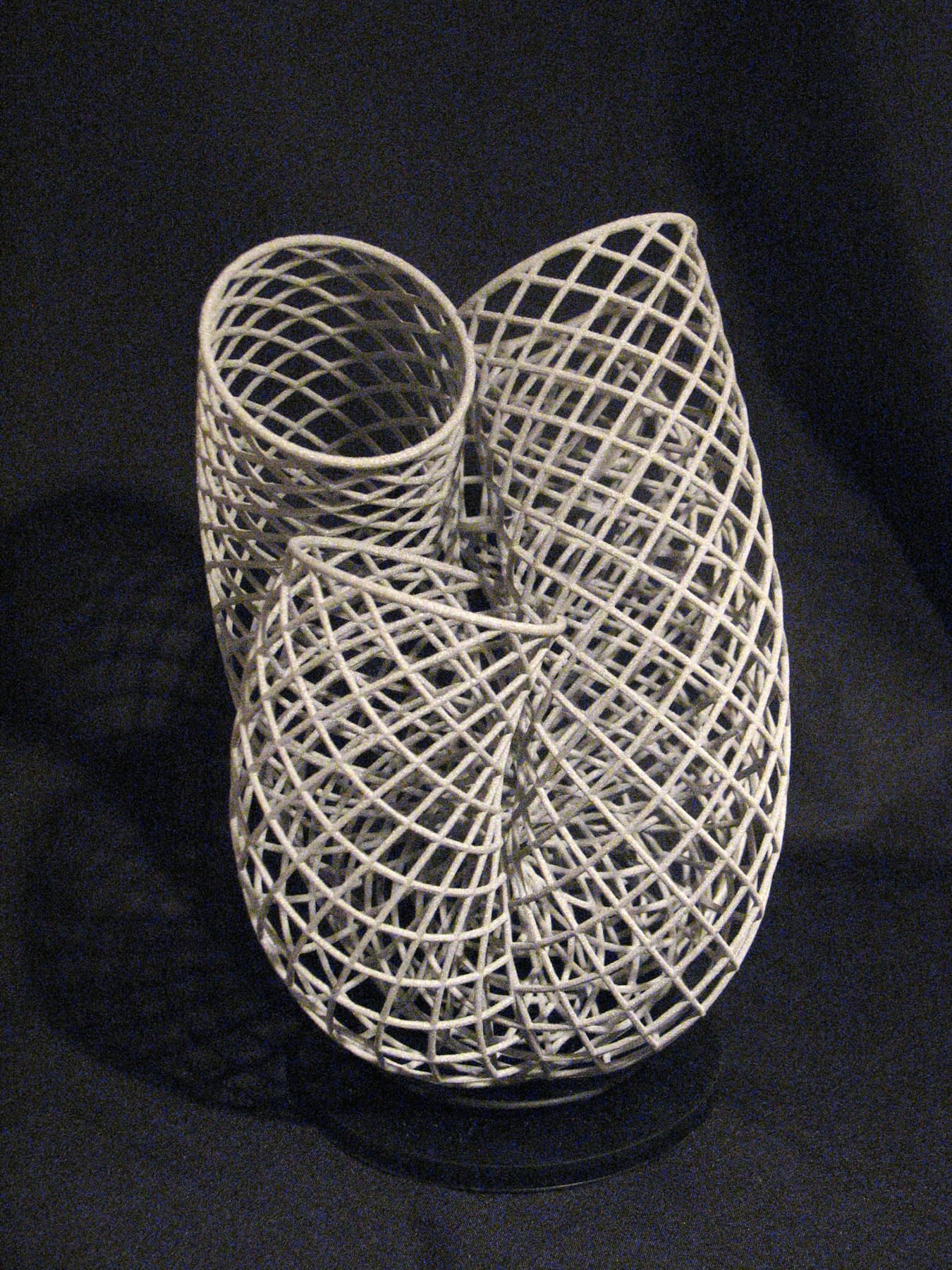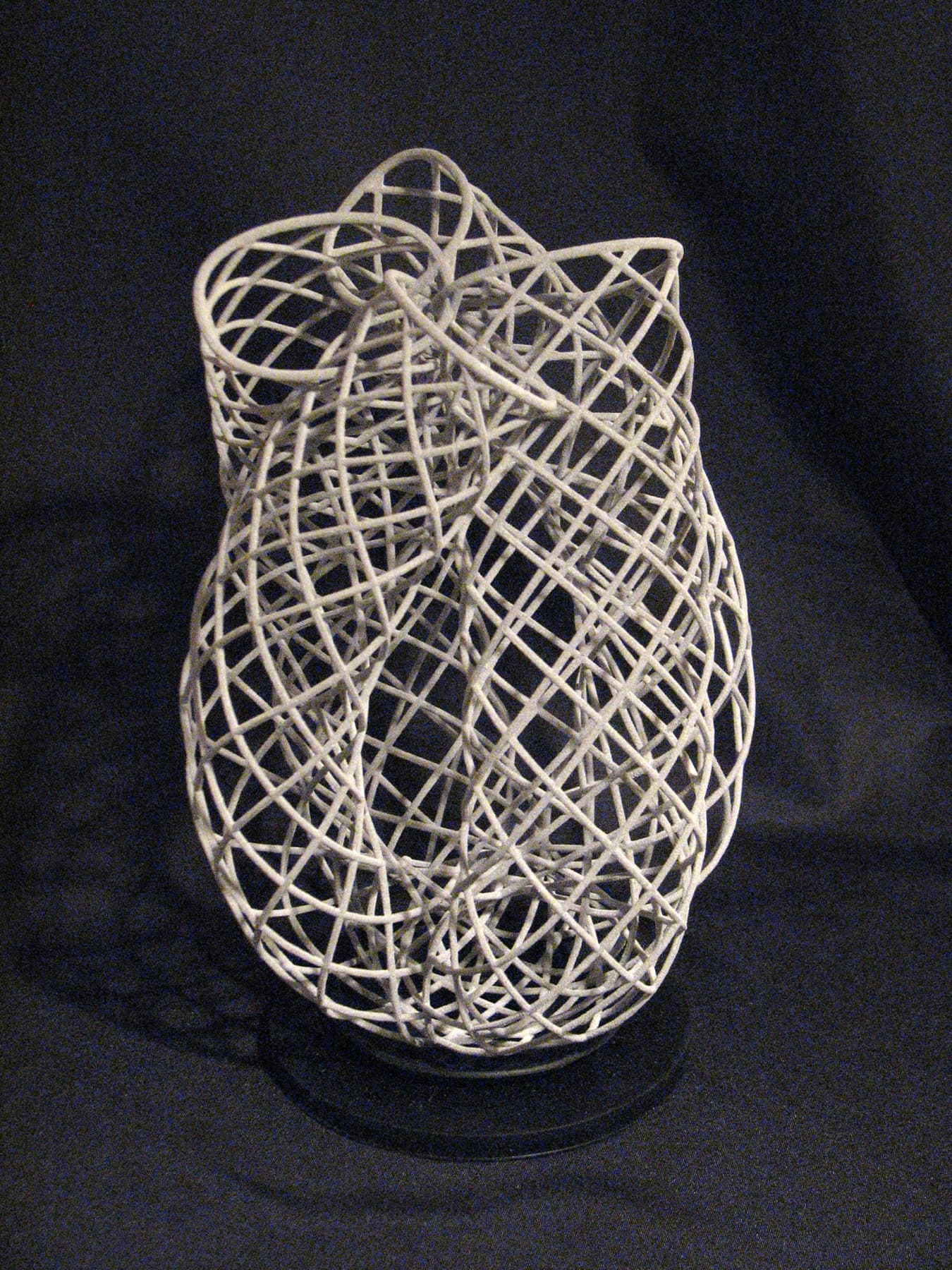2015 Joint Mathematics Meetings
Robert Krawczyk
Artists
Robert Krawczyk
Artist
BitArt
United States
Statement
Forms and their structural enclosures can be explored in a number of ways, in a number of scales. Extrusions, assemblages, or incorporating traditional structural systems; or ones according to mathematically defined elements. What forms emerge when a 2D curve is used as a 3D path for some section defined by a simple shape, such as a circle, an ellipse, a square, a rectangle, or a triangle? This series investigates a simple form based on approximately one-half of a Lemniscate of Bernoulli curve, developed about 1694. It is very similar to a common eight curve, except the loops are more elliptical. For the enclosure a diagonal grid was incorporated. These were generated using custom software and then 3D printed in metallic plastic.
Artworks

